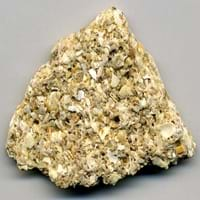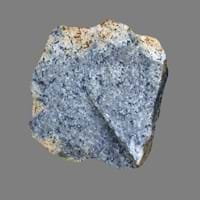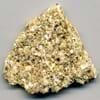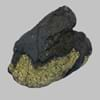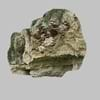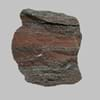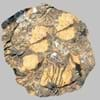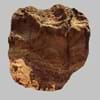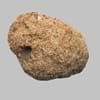Coquina and Shonkinite
Definition
Definition
Coquina is a sedimentary rock that is composed either wholly or almost entirely of the transported, abraded, and mechanically-sorted fragments of the shells of molluscs, trilobites, brachiopods, or other invertebrates
Shonkinite is a rare, dark-coloured and intrusive igneous rock which contains augite and orthoclase feldspar as its primary constituents
History
Origin
European Foreland Basins
USA
Discoverer
Unknown
Unknown
Etymology
From Concha (Latin)+ Coquina(Spanish) +conch(English)= Couquina (mid 19th century)
From the name of Shonkin Sag ranges in the Highwood Mountains of north-central Montana, US
Class
Sedimentary Rocks
Igneous Rocks
Sub-Class
Durable Rock, Soft Rock
Durable Rock, Medium Hardness Rock
Family
Group
Not Applicable
Not Applicable
Other Categories
Coarse Grained Rock, Opaque Rock
Coarse Grained Rock, Fine Grained Rock, Medium Grained Rock, Opaque Rock
Texture
Texture
Clastic
Earthy
Color
Beige, Buff, Orange
Brown, Buff, Cream, Green, Grey, Pink, White
Maintenance
More
Less
Durability
Non-Durable
Durable
Water Resistant
No
No
Scratch Resistant
No
Yes
Stain Resistant
No
Yes
Wind Resistant
No
No
Acid Resistant
No
No
Appearance
Layered, Banded, Veined and Shiny
Banded and Foilated
Uses
Architecture
Interior Uses
Decorative Aggregates, Homes, Hotels, Interior Decoration
Decorative Aggregates, Flooring, Homes, Interior Decoration
Exterior Uses
Garden Decoration, Office Buildings
As Building Stone, As Facing Stone, Garden Decoration, Paving Stone
Other Architectural Uses
Curbing
Curbing
Industry
Construction Industry
Building houses or walls, Construction Aggregate
As Dimension Stone, Cement Manufacture, Construction Aggregate, for Road Aggregate, Landscaping, Making natural cement, Manufacture of Magnesium and Dolomite Refractories
Medical Industry
Not Available
Not Available
Antiquity Uses
Artifacts, Monuments, Sculpture, Small Figurines
Artifacts, Monuments, Sculpture
Other Uses
Commercial Uses
Creating Artwork
Cemetery Markers, Creating Artwork
Types
Types
Not Available
Not Available
Features
Available in Lots of Colors and Patterns, Is one of the oldest rock
Available in Lots of Colors and Patterns, Is one of the oldest rock, Matrix variable
Archaeological Significance
Monuments
Used
Used
Famous Monuments
Not Available
Not Available
Sculpture
Used
Used
Famous Sculptures
Not Available
Not Available
Pictographs
Used
Used
Petroglyphs
Used
Used
Figurines
Used
Used
Fossils
Present
Absent
Formation
Formation
Coquina is a sedimentary rock which is formed when billions of small clam-like seashell, called Coquina, or cockleshell are die and hence are deposited, buried and turns into a rock when pressure is applied.
Shonkinites are formed due to alkaline igneous activities and are generally formed in thick continental crustal areas or in Cordilleran subduction zones.
Composition
Mineral Content
Apatite, Augite, Bronzite, Calcite, Chert, Chlorite, Clay Minerals, Epidote, Feldspar, Garnet, Micas, Muscovite or Illite
Amphibole, Biotite, Feldspar, Hornblade, Micas, Muscovite or Illite, Plagioclase, Pyroxene, Quartz
Compound Content
CaO, Carbon Dioxide, Iron(III) Oxide, MgO
Aluminium Oxide, CaO, Iron(III) Oxide, FeO, Potassium Oxide, MgO, MnO, Sodium Oxide, Phosphorus Pentoxide, Silicon Dioxide, Titanium Dioxide
Transformation
Metamorphism
No
Yes
Types of Metamorphism
Not Applicable
Burial Metamorphism, Cataclastic Metamorphism, Contact Metamorphism, Hydrothermal Metamorphism, Impact Metamorphism, Regional Metamorphism
Weathering
Yes
Yes
Types of Weathering
Biological Weathering, Chemical Weathering, Mechanical Weathering
Biological Weathering, Chemical Weathering, Mechanical Weathering
Erosion
Yes
Yes
Types of Erosion
Coastal Erosion, Sea Erosion, Water Erosion, Wind Erosion
Chemical Erosion, Coastal Erosion, Sea Erosion, Water Erosion
Properties
Physical Properties
Hardness
1-2
5.5-6
Grain Size
Coarse Grained
Medium to Fine Coarse Grained
Fracture
Irregular
Not Available
Streak
White
White
Porosity
Highly Porous
Less Porous
Luster
Dull to Vitreous to Submetallic
Subvitreous to Dull
Compressive Strength
Not Available
150.00 N/mm2
14
Cleavage
Not Available
Perfect
Toughness
Not Available
Not Available
Specific Gravity
1.10-2.24
2.6-2.7
Transparency
Opaque
Opaque
Density
2.8-2.9 g/cm3
2.6-2.8 g/cm3
Thermal Properties
Specific Heat Capacity
Not Available
0.92 kJ/Kg K
10
Resistance
Heat Resistant, Impact Resistant, Pressure Resistant, Wear Resistant
Heat Resistant, Impact Resistant, Wear Resistant
Reserves
Deposits in Eastern Continents
Asia
Not Available
China, India, Iran, Saudi Arabia, Sri Lanka, Taiwan, Thailand, Turkey, Vietnam
Africa
Not Available
Angola, Egypt, Madagascar, Namibia, Nigeria, South Africa
Europe
United Kingdom
Bulgaria, England, Germany, Norway, Romania, Switzerland
Others
Not Available
Not Available
Deposits in Western Continents
North America
USA
USA
South America
Not Available
Brazil, Chile
Deposits in Oceania Continent
Australia
Not Available
New Zealand, Queensland, South Australia, Western Australia
All about Coquina and Shonkinite Properties
Know all about Coquina and Shonkinite properties here. All properties of rocks are important as they define the type of rock and its application. Coquina belongs to Sedimentary Rocks while Shonkinite belongs to Igneous Rocks.Texture of Coquina is Clastic whereas that of Shonkinite is Earthy. Coquina appears Layered, Banded, Veined and Shiny and Shonkinite appears Banded and Foilated. The luster of Coquina is dull to vitreous to submetallic while that of Shonkinite is subvitreous to dull. Coquina is available in beige, buff, orange colors whereas Shonkinite is available in brown, buff, cream, green, grey, pink, white colors. The commercial uses of Coquina are creating artwork and that of Shonkinite are cemetery markers, creating artwork.
|
||
|
||
|
